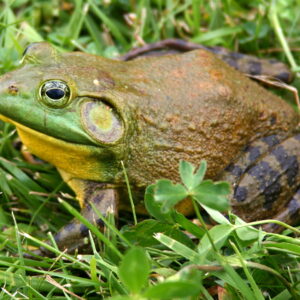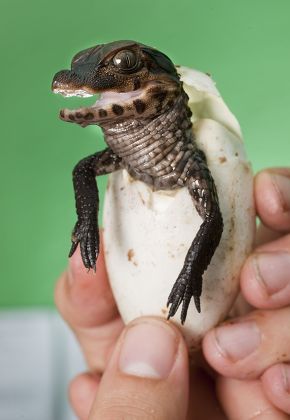Amphibians For Sale On Reptilessales.com
Reptilessales.com offers a variety of amphibians for sale, including frogs, toads, newts, and salamanders. Whether you are a hobbyist or breeder, you are sure to find an amphibian that interests you.
Frogs for Sale
Reptilessales.com offers many types of frogs (-) including tree frogs, dart frogs, pacman frogs, and African dwarf frogs. Tree frogs, like the White’s Tree Frog and Green Tree Frog, are popular pet frogs due to their bright colors and large size. Poison dart frogs, such as the Blue Dart Frog and Strawberry Dart Frog, are beautiful but their skin toxins can be dangerous, so handling should be avoided. The African Dwarf Frog is a fully aquatic frog that does well in an aquarium.
Toads for Sale
If you prefer toads, consider the colorful Fire-Bellied Toad or the enormous Marine Toad. Fire-Bellied Toads are terrestrial and semi-aquatic, coming in shades of red, orange and black. Marine Toads, also known as Cane Toads, are one of the largest toad species. Due to their size, they require a very large enclosure.
Newts and Salamanders for Sale
For newts, the vividly colored Fire-Bellied Newt and the rough-skinned Common Newt are available. Several species of salamanders are offered as well, such as the Tiger Salamander, Axolotl, and Slimy Salamander. The aquatic Axolotl remains in a larval state its whole life and comes in a variety of color morphs. The Tiger Salamander and Slimy Salamander are terrestrial as adults.
Reptilessales.com strives to offer a diversity of amphibians to suit every enthusiast. Please ensure you thoroughly research the needs of any amphibian before purchasing to provide it the best possible care.
Popular Pet Amphibian Species Available
When choosing an amphibian as a pet, there are several popular species available for purchase on Reptilessales.com.
African Dwarf Frogs
These fully aquatic frogs only grow 1-3 inches long and live 3-5 years. They are social animals and do best in groups. African Dwarf Frogs require a filtered aquarium with plants, a secure lid, and pellet or flake food 2-3 times a week.
PacMan Frogs
The brightly colored PacMan frog is a popular choice, growing up to 6 inches long and living 10-15 years. They are mostly terrestrial, so they need an enclosure with damp soil, plants, a shallow water bowl, and a heat lamp. Feed juvenile PacMan frogs pinhead crickets 2-3 times a week and adults 2-4 large crickets 2-3 times a week.
Fire-Bellied Toads
At 2-3.5 inches long, these striking toads live 10-15 years. They are semi-aquatic, needing a filtered aquarium with a platform, heat lamp, and pinhead crickets and worms 2-3 times a week.
Tree Frogs
Green Tree Frogs and White’s Tree Frogs make interesting pets, reaching up to 4 inches long and living 15-20 years. They require a tall, mesh or screen-topped enclosure misted regularly, filled with plants, branches, and a heat lamp. Feed juvenile tree frogs pinhead crickets 3 times a week and adults 4-6 crickets 2-3 times a week.
With the proper care and habitat, amphibians can make rewarding lifelong pets. Be sure to thoroughly research the needs of any species before bringing one home. Proper nutrition, lighting, heating, and housing are essential to keeping pet amphibians healthy and happy.
Amphibian Care Basics and Habitat Needs
To properly care for amphibians, you must provide the correct habitat and understand some basic needs.
Enclosure
House your amphibian in an escape-proof enclosure with a secure mesh or screen lid. A 10-gallon aquarium or larger is suitable for most species. Include damp substrate, like coconut coir or reptile bark, that will hold moisture. Add hiding spots, climbable branches, and other furnishings to encourage natural behaviors.
Heating and Lighting
Many amphibians require additional heat and UVB lighting. Use an under-tank heater and full-spectrum UVB bulb to create a heat and light gradient in the enclosure. The temperature should be 75-80 F. UVB exposure, especially for frogs and newts, helps synthesize vitamin D3 for healthy bone growth.
Humidity
Most amphibians need moderate to high humidity, around 70-80%. Mist your enclosure with dechlorinated water or use an automatic mister. Provide a shallow water bowl for drinking and soaking. Humidity levels that are too low can cause dehydration, and levels that are too high promote disease. Monitor humidity with a hygrometer and make adjustments as needed.
Diet
Feed your amphibian a diet of appropriately sized live insects, like crickets, worms, and feeder fish. Gut-load feeder insects before offering to increase their nutritional value. Most amphibians should be fed 2-3 times a week. Always have a shallow water bowl available for your amphibian since many species will not eat unless they have access to fresh water.
Health
Monitor your amphibian daily for signs of illness or injury. Look for lethargy, lack of appetite, swelling, or discharge. Have a vet who sees amphibians on hand in case of medical issues. Quarantine any new arrivals for a minimum of 30 days before introducing them to the rest of your collection. Proper habitat, nutrition, and care will help keep amphibians healthy and happy.
Are turtles amphibians
Are Turtles Amphibians?
Turtles are reptiles, not amphibians. While amphibians, such as frogs and salamanders, live part of their lives in water and part on land, reptiles are fully terrestrial animals. Turtles are air-breathing reptiles that have scales and lay eggs on land. However, some species of turtles, known as semi-aquatic turtles, live most of their lives in or around bodies of water.
Differences Between Amphibians and Reptiles
There are several key differences between amphibians and reptiles:
- Amphibians usually have a larval stage, such as tadpoles, before becoming adults. Reptiles are born on land.
- Amphibians go through metamorphosis and develop lungs as adults. Reptiles have lungs their entire lives.
- Amphibian skin is usually moist and permeable, allowing water and oxygen absorption. Reptile skin is dry, scaly and waterproof.
- Most amphibians return to water to breed and lay eggs. Reptiles breed and lay eggs on land.
- Amphibians are typically more dependent on water and moisture. Reptiles are fully terrestrial.
While some turtle species spend most of their time in water, they emerge to bask in the sun and lay eggs. Unlike amphibians, turtles cannot breathe underwater and must surface periodically to breathe air. Turtles are well adapted to life in and out of water, but they are not amphibians.
In summary, the key distinction is that amphibians have a larval aquatic stage and go through metamorphosis, whereas reptiles, including turtles, are fully terrestrial egg-laying animals their entire lives. Although semi-aquatic turtles reside primarily in water, they must breathe air to survive. Turtles should not be mistaken for amphibians.
Are frogs amphibians
Amphibians, such as frogs, toads and salamanders, are vertebrate animals that live part of their lives in water and part on land. They are ectothermic, meaning they cannot regulate their own body temperature and instead rely on external sources to heat and cool themselves. As amphibians, frogs undergo an aquatic larval stage, the tadpole, before metamorphosing into air-breathing adults.
Are Frogs Amphibians?
Yes, frogs are amphibians. They possess certain characteristics that classify them as amphibians:
- They hatch from eggs into larvae (tadpoles) that live in water and breathe using gills.
- Tadpoles undergo metamorphosis into frogs with lungs, limbs, and other features that allow them to live on land.
- As adults, most frog species live near sources of freshwater, such as ponds, lakes and streams. They remain close to water as they still need to keep their skin moist.
- Frogs are ectothermic, so they bask in the sun or move into shade to control their body temperature.
Some common species of frogs include:
- The American Green Tree Frog, known for its vibrant green color and ability to climb trees.
- The Poison Dart Frog, with bright colorations that act as a warning to predators of their toxicity.
- The African Dwarf Frog, one of the smallest frog species, native to central Africa.
- The Canadian Toad, found throughout Canada and the northern United States. Despite its name, the Canadian Toad is also a frog, not a toad.
In summary, frogs possess all the characteristics of amphibians. They hatch from eggs as tadpoles, undergo metamorphosis, breathe air as adults but remain close to freshwater, and are ectothermic. There are many diverse species of frogs found all over the world, from the tropics to more temperate regions. Frogs play an important role in ecosystems by feeding on insects and serving as a food source for larger predators.
Amphibians
Amphibians


